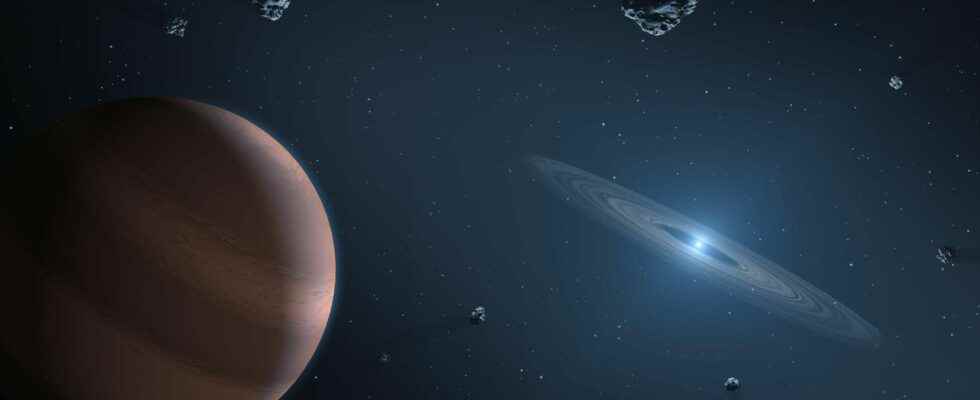You will also be interested
[EN VIDÉO] Proxima b, the closest exoplanet to us! It is the only known planet to date orbiting Proxima Centauri, a star located in Alpha Centauri. This system is the closest to our Solar System, “only” 4,244 light-years from us.
For millennia we thought there were planets only in our Solar system uniquely. If the search for other worlds has crossed the minds of many thinkers and astronomersthe discovery of the first exoplanet was only made in October 1995 by Michel Mayor and Didier Queloz, which earned them the honor of the Nobel Prize in Physics in 2019. Today, NASA announces that the total number of exoplanets detected since 1995 has exceeded 5,000.
The discovery of all these worlds external to our system has motivated the entire scientific community and continues to fascinate public opinion, in the hope of finding among them a potential other Earth, a planet that could harbor extraterrestrial life, or even other civilizations. But scientists are mainly interested in all these new worlds in order to better understand ours.
Many programs have been developed to detect more and more of them, and to obtain more information about them. Given their number, the study of exoplanets can even sometimes be a matter of statistics. This helps us learn more about the formation of systems, planets, and favorable conditions to support life.
On occasion, NASA offers a nice exoplanetary melody! Each note is represented by an exoplanet discovered during the last two decades. Its corresponding circle locates it and the size of its orbit is indicated by the tone: the higher it is, the smaller the orbit. The color of the circle indicates which method was used to detect it. © NASA, JPL-Caltech
Fleet of dedicated space telescopes
Several space telescopes have been developed for this. The best known is the telescope American Kepler who discovered 2,662 exoplanets on his own in less than ten years. Today it’s the telescope’s turn Tess (Transiting Exoplanet Survey Satellite), NASA, to detect the passage of exoplanets in front of their star. This is the method of transit, that is to say the study of brightness of the star when the planet passes in front of it. You can get a lot of information from it, including its size, its massher period of revolutionits position relative to the star, and sometimes even some information about its atmosphere. This is the main method used.
Several telescopes are planned to continue the study. Even the titanic James Webb Space Telescope will be used to capture the light of the atmospheres, in order to be able to give the chemical composition. On the NASA side, there is still the Nancy Roman Space Telescope which will be dedicated to it. It is planned to be launched in 2027. On the European side, it is the Ariel space telescope which is scheduled to be sent in 2029, and dedicated to the study of exoplanetary atmospheres.
Finally, there remains the largest bank of potential exoplanets: the catalog of the Gaia mission. Nearly two billion stars have been sifted through by the space telescope since 2013, an immeasurable number of potential planets in the 80,000 billion terabytes of data. Space telescopes and professional observatories are not numerous enough; it takes several observations to confirm the existence of an exoplanet and register it among the 5,000 others. This is where amateur astronomers have the opportunity to collaborate to this titanic work.
A great diversity
What are all these exoplanets? First, 30% of them are gas giants. The reason is above all that they are easier to detect. But it is however frequent that a second star tries to form in a system but the first one did not leave enough matter for it. We speak of “failed stars”.
There are also 35% of exoplanets of the genus Neptuneequivalent size, often frozen even if a few of them are Hot Neptunes. Then 31% of super-earthsplanets whose size can range between that of Earth and that of Neptune, but they are not necessarily planets solid. The remaining 4% are the size of the Earth, in other words… small, therefore difficult to detect.
Interested in what you just read?
